Have you ever been too worried about something that’s about to happen, only to realize later that it wasn’t as stressful as you anticipated? Do you feel overwhelmed at times by the demands of daily life and you wish life was a bit simpler so there was more time for self-care? Or have you ever felt like you’re always striving to get something only to end up feeling that it didn’t give you the happiness you thought it would? I often experience these unknowingly, only to realize later the immense stress and dissatisfaction it causes when things bubble up over time. This has convinced me that mental health is very important for our overall well being. Just as we exercise to keep our bodies physically fit, it helps to take concrete steps to keep our minds healthy and strong.
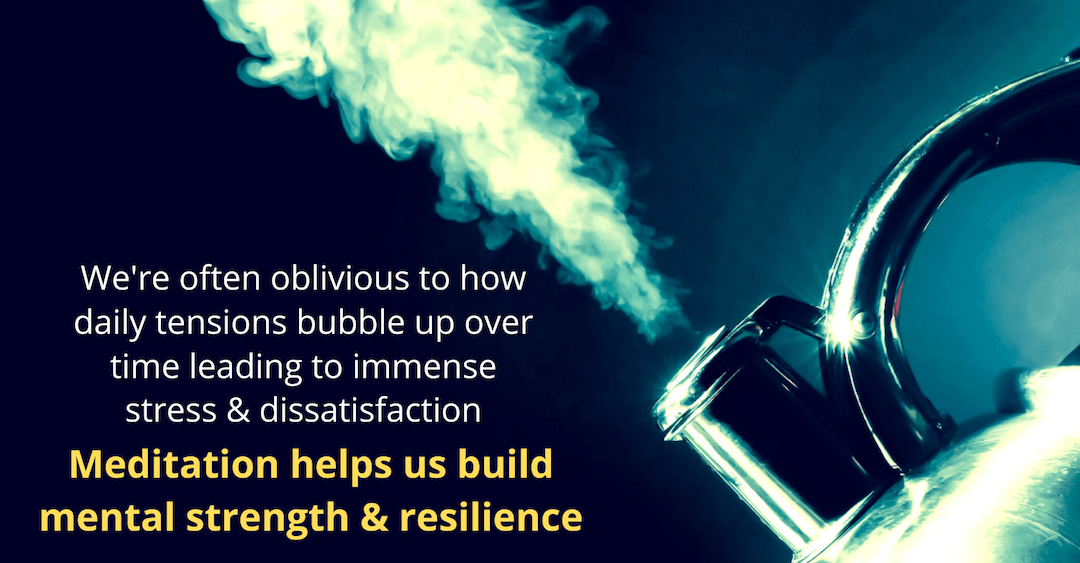
I have dealt with obsessive compulsive disorder (OCD) and anxiety issues for a long time. Over the last two years, incorporating meditation in my daily routine has helped me a lot with stress and anxiety. It has enabled me to be more present and become more aware of my anxious thoughts as I go about my daily activities. This awareness has improved my ability to distance myself from these thoughts, look at them more objectively and reduce the stress that they cause. Meditation has immensely improved my overall sense of balance, calm and contentment and even my productivity and quality of sleep.
There is a lot going on right now, over and above a global pandemic! Meditation is one of the ways to help us build mental strength and resilience we need in such times. This post is meant to help you get started with meditation, understand how it helps us in our daily lives, learn how to deal with obstacles in getting started and cultivate a gentle approach to meditation. Just like with anything new, meditation can feel daunting at first. The idea is to help you start small, make incremental progress and experience some of the benefits. If this peaks your interest, read on. But having said that, if it still feels overwhelming, respect that state of your mind and know that this resource will be available to you whenever you are ready to try.
A quick glance
Life is busy, so it’s completely understandable if you’re just looking for the key takeaways. Meditation involves focusing our attention on an anchor, such as the breath. When we try to do this, our minds often tend to get distracted and randomly jump from one thought to another. The aim is not to eliminate these distractions, but to just observe them and keep coming back to the anchor. This practice helps us develop better focus even outside of meditation as we go about our daily activities. It also helps us get insight into our thoughts, see our emotions more objectively and reduce stress and anxiety. Meditation can be hard, but we can introduce it into our lives incrementally and experience its benefits even by meditating for a few minutes every day. If this sounds interesting, keep reading to try out a quick meditation practice and learn more.
A meditation practice to get started
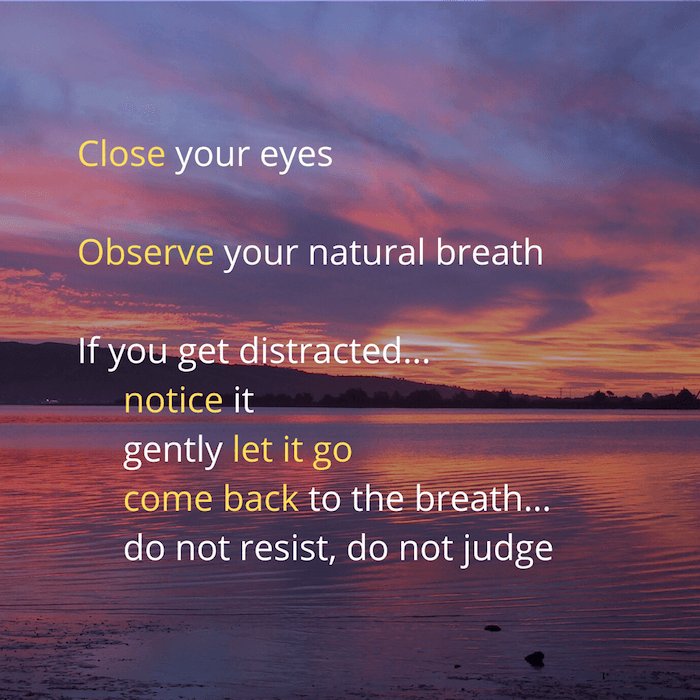
Here’s a short meditation you could try. Sit on a chair, on a cushion, on the floor or lie down. Gently close your eyes. Bring your attention to your breath. Count 1 on the inhale, 2 on the exhale, 3 on the inhale, 4 on the exhale and so on. When you reach 10, come back to 1 and start again. Observe each inhale and exhale through its full length, without trying to control or analyse. You could focus on the movement of air at your nostrils or on the movement of the chest or the belly. Every time you catch yourself in a train of thoughts, gently bring back your attention to your breath and start counting from 1 again. Open your eyes after a few minutes. Sometimes it can be helpful to set a target for the amount of time you will meditate to add some structure to the practice. It can be as short or long as you like or you can skip it if it doesn’t feel helpful.
Note that the aim of counting is not to focus on the count itself, nor is it to see how far you can go undistracted. It is just a tool to help us focus on the breath and to consciously notice a distraction. The breath is something that is always available to us and focussing on it naturally turns our attention inward. That is why it is a great anchor for meditation.
If the idea of meditating by yourself without any guidance feels too daunting, consider trying out guided meditations described in this section ahead.
Here’s a short meditation you could try. Sit on a chair, on a cushion, on the floor or lie down. Gently close your eyes. Bring your attention to your breath. Count 1 on the inhale, 2 on the exhale, 3 on the inhale, 4 on the exhale and so on. When you reach 10, come back to 1 and start again. Observe each inhale and exhale through its full length, without trying to control or analyse. You could focus on the movement of air at your nostrils or on the movement of the chest or the belly. Every time you catch yourself in a train of thoughts, gently bring back your attention to your breath and start counting from 1 again. Open your eyes after a few minutes. Sometimes it can be helpful to set a target for the amount of time you will meditate to add some structure to the practice. It can be as short or long as you like or you can skip it if it doesn’t feel helpful.

Note that the aim of counting is not to focus on the count itself, nor is it to see how far you can go undistracted. It is just a tool to help us focus on the breath and to consciously notice a distraction. The breath is something that is always available to us and focussing on it naturally turns our attention inward. That is why it is a great anchor for meditation.
If the idea of meditating by yourself without any guidance feels too daunting, consider trying out guided meditations described in this section ahead.
Distractions – Not a hurdle, but a part of the practice
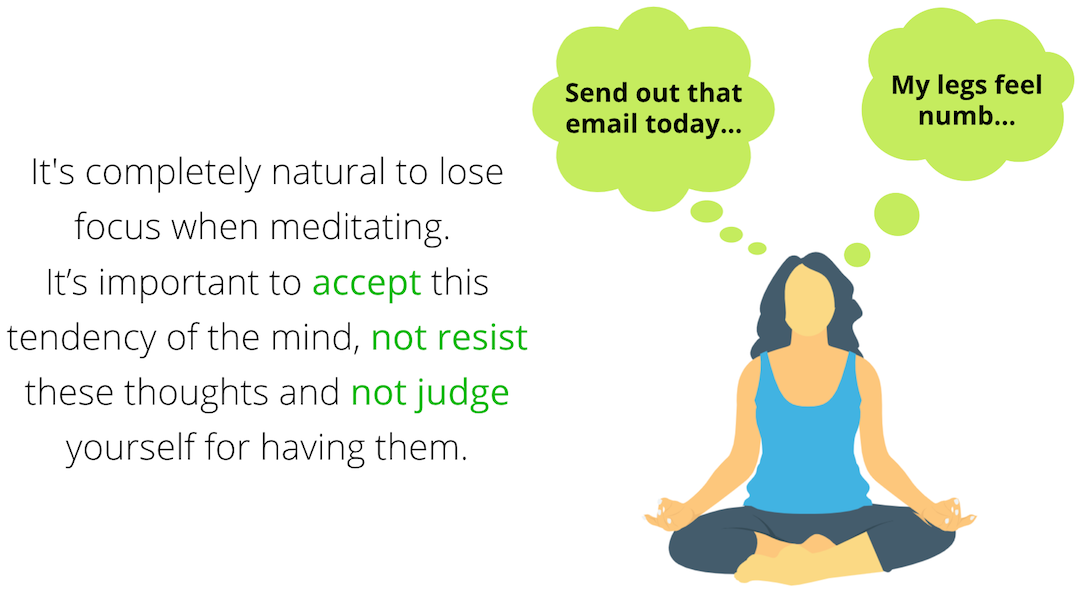
Probably the most common thing people observe during meditation is that the mind keeps jumping to random thoughts every moment. It is completely normal to have a train of thoughts such as “I should remember to send out that email today”, “I wish I had more time for exercise”, “did I leave the stove on?”, “my legs feel numb” and so on. It is in fact quite expected. It’s important to accept this tendency of the mind, not resist these thoughts and not judge yourself for having them. Getting distracted and noticing that you got distracted are an essential part of the practice. Every time you notice that you have lost focus, gently come back to your anchor.
One technique I have often found effective is labeling each thought that enters the mind during meditation and then gently letting it go. For example, “send out that email today” can be labeled as “work”, “my legs feel numb” can be labeled as “physical sensation” and so on. The particular labels you associate with your thoughts are not important, so you can choose any labels you are comfortable with. The mere act of labeling allows the mind to become aware of the thought and step out of it instead of getting carried away with it. This simple technique is effective in slowing down thoughts and calming the mind. Labeling our thoughts also gives us insight into our thought patterns and can help us get more clarity.
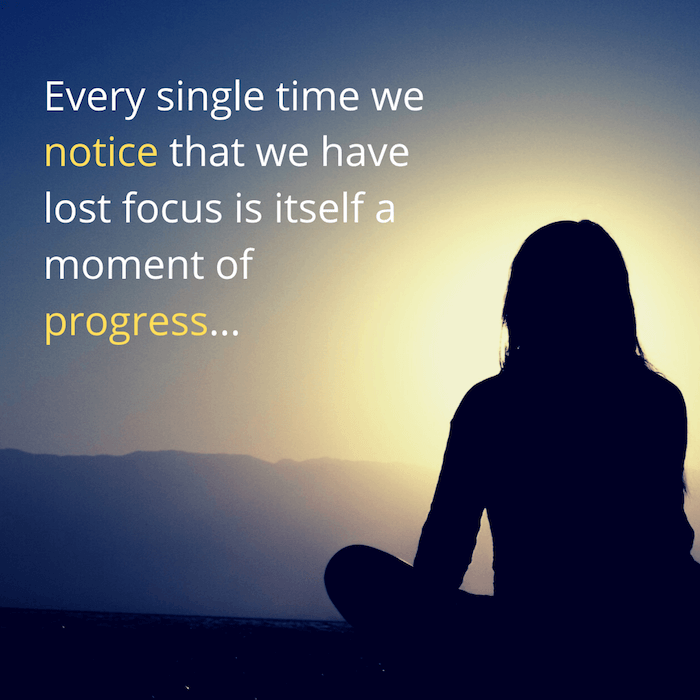
Often there are times when we feel like a meditation session didn’t go as well as we had hoped. There’s a common notion that a meditation session was “successful” only if the mind was completely emptied of all thoughts. This lofty bar itself deters people from trying to meditate. However, it’s important to keep in mind that we experience the benefits of meditation through the process of trying to meditate, regardless of how well we were able to focus on a given day. It’s perfectly okay to lose focus even every few seconds. As we’ll see next, every single time we notice that we have lost focus is itself a moment of progress.
How meditation helps in daily life
The act of noticing that our attention has wandered and gently bringing back focus on the anchor is an essential part of the practice and it helps us in our lives outside of meditation as well. Imagine concentrating hard on something at work when you suddenly notice an email asking you for something about an unrelated project. In such situations, we tend to get distracted away from the task at hand and could end up spending a lot of time reading the email and following up on any action items without realizing it. The practice of meditation helps us notice such distractions sooner and make a conscious decision about what to focus on in the current moment. Distractions will always be there; the aim is not to eliminate them or ignore them but to get better at noticing them and making a conscious choice about whether to pay attention or set them aside.
The act of noticing distractions and labeling them also gives us insight into the thoughts that we are occupied with. For example, recently while meditating I noticed that I kept thinking about a project I was working on. This helped me realize that I was getting a bit too caught up in it and it was affecting other parts of my life. This realization encouraged me to take a short break from the project, restore the balance that was lost and come back to it again with renewed interest.
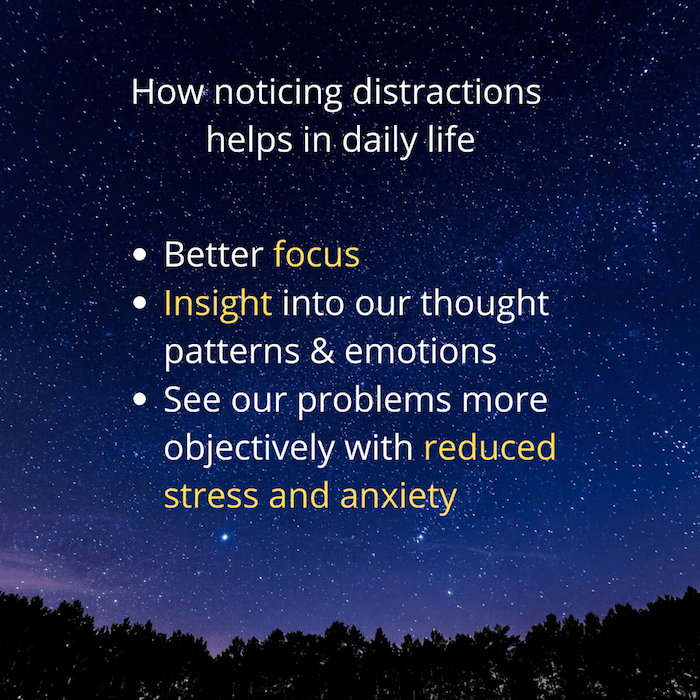
Sometimes I procrastinate a task because of a seemingly valid excuse. However, developing insight into my thoughts through meditation has made me realize that at times this procrastination is due to the underlying anxiety associated with performing that task. This realization enables me to address the anxiety and subsequently complete the task instead of trying to run away from it.
Over time, it is possible to develop a broader non-judgemental awareness of our thoughts and emotions. This can help us see our problems more objectively and help us transcend the situation instead of getting bogged down. It can change our perspective of a difficult situation as a passing experience rather than an irreversible condition. Even as a relative beginner to meditation, I am starting to notice these benefits. When I’m anxious or upset about something, awareness of this emotion and the resulting physical sensations has often helped me step out of it and see it more objectively than if I were to be fully immersed in it. This awareness greatly reduces stress and anxiety by enabling me to catch a negative train of thought before it can spiral into a stressful experience.
Summing it up, getting distracted and noticing distractions are a part of the practice, as opposed to being hurdles in the practice. Don’t stress about how long or how successfully you are able to focus while meditating, simply try your best. Initially it’s possible that you might get lost in thought and realize it only after you are deep into that train of thought. With practice you’ll find yourself catching this train of thought sooner.
Being gentle with yourself
It is important to be gentle with yourself when you’re trying to incorporate meditation in your life. On a busy day, you might be more preoccupied or distracted than usual. On another day, you might just be tired or in a bad mood, making it harder to meditate. Respect and accept this state of your body and mind. Do your best but don’t stress or judge yourself if you aren’t able to. Similarly, trying too hard to focus can introduce rigidity, both physically and mentally. For example, trying too hard to focus on the breath can cause us to start controlling it, as opposed to just observing it. Allow yourself to relax and bring about a sense of ease while you’re trying to meditate.
Meditation can surface difficult underlying emotions at times. If this causes any kind of discomfort, physical or mental, remember to be gentle to yourself and stop the practice if needed. You can always come back to it at a later point in time once you feel more comfortable.
Meditating without judgement and expectations
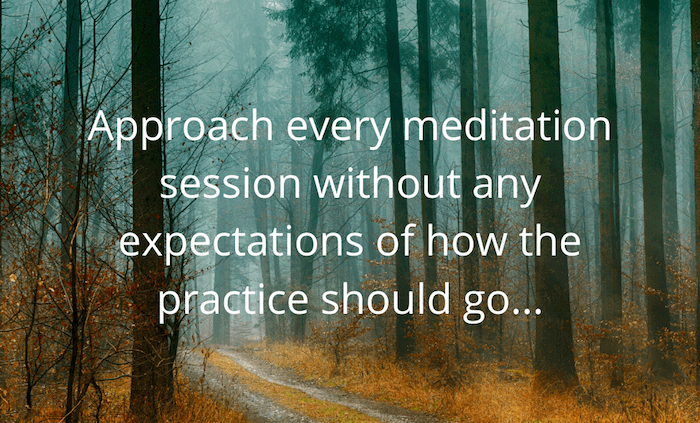
We often have the tendency to compare the current version of ourselves to the version we want to become and to keep striving towards becoming that. This comparison and evaluation is important in several aspects of our lives, but it can become an obstacle in the path of meditation. While it is fine to evaluate and expect longer term benefits you want to get out of the practice, evaluating our daily meditation sessions can leave us frustrated and discouraged and feeling like we are not making enough progress. Instead, it is useful to let go of the tendency to judge and evaluate our daily sessions. This also means approaching every meditation session as a beginner without any expectations of how the practice should go. Cultivating this attitude of non-judgement actually helps us get more out of our meditation practice in the long term.
Dealing with boredom
Getting bored of meditation can happen for a few different reasons. Boredom can arise if you haven’t found a good reason to practice meditation and there’s no real motivation to try. It’s a good idea to ask yourself why you want to meditate. It’s perfectly okay if you don’t have a strong reason and are just curious to try it out to see if you experience any benefits. However, if you don’t feel any motivation at all or if you’re strongly resisting the idea of meditating, don’t force it. Know that you can always come back to it later.
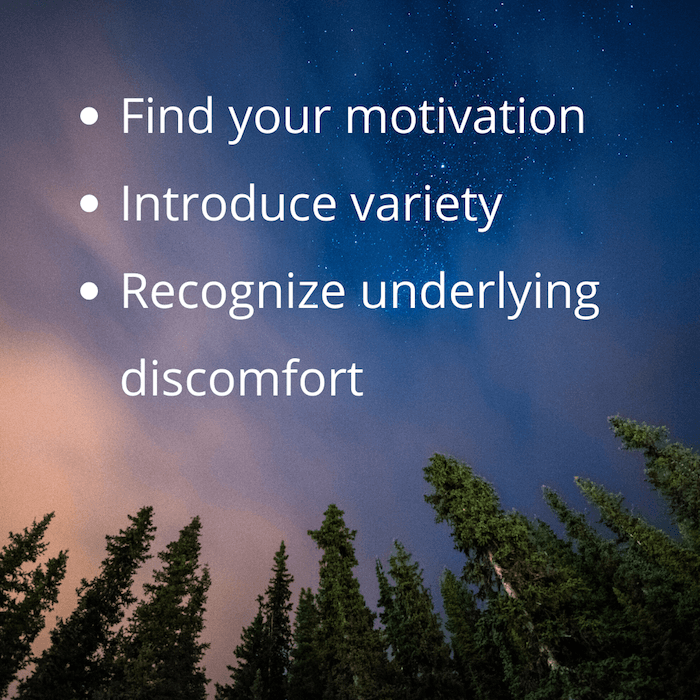
When we first start to meditate, the initial enthusiasm and motivation keep us interested in the practice. As we keep meditating everyday, it starts to get repetitive, the enthusiasm tends to wear off and boredom can set it. This can also make it harder to focus and can make us feel even more demotivated. In such situations, it is useful to introduce some variety to make the practice more engaging. If you’re used to focussing on the movement of the belly as you breathe, try focusing on the movement of air at the nostrils for a change. You could also go deeper into the breath, for example by closely observing the short gap after each inhale and after each exhale. Changing the anchor of meditation can also help. For example, you could focus on sounds you can hear in your surroundings or physical sensations in the body. If you’re using an app to meditate, try a different meditation style or instructor.
Sometimes boredom can be a disguised form of underlying discomfort associated with facing our deeper emotions, especially if we are experiencing stress or if we are not in a great state of mind overall. Our minds can cover up the underlying discomfort with boredom so as to avoid facing it. Recognizing this can help us see through the boredom, face our underlying emotions and feel motivated to deal with them. Meditation itself can be immensely helpful both in realizing the cause of our boredom and also in building mental resilience to deal with these emotions. Again, it’s important to be gentle with yourself and re-evaluate whether this is the right time to introduce meditation in your life.

Getting bored of meditation can happen for a few different reasons. Boredom can arise if you haven’t found a good reason to practice meditation and there’s no real motivation to try. It’s a good idea to ask yourself why you want to meditate. It’s perfectly okay if you don’t have a strong reason and are just curious to try it out to see if you experience any benefits. However, if you don’t feel any motivation at all or if you’re strongly resisting the idea of meditating, don’t force it. Know that you can always come back to it later.
When we first start to meditate, the initial enthusiasm and motivation keep us interested in the practice. As we keep meditating everyday, it starts to get repetitive, the enthusiasm tends to wear off and boredom can set it. This can also make it harder to focus and can make us feel even more demotivated. In such situations, it is useful to introduce some variety to make the practice more engaging. If you’re used to focussing on the movement of the belly as you breathe, try focusing on the movement of air at the nostrils for a change. You could also go deeper into the breath, for example by closely observing the short gap after each inhale and after each exhale. Changing the anchor of meditation can also help. For example, you could focus on sounds you can hear in your surroundings or physical sensations in the body. If you’re using an app to meditate, try a different meditation style or instructor.
Sometimes boredom can be a disguised form of underlying discomfort associated with facing our deeper emotions, especially if we are experiencing stress or if we are not in a great state of mind overall. Our minds can cover up the underlying discomfort with boredom so as to avoid facing it. Recognizing this can help us see through the boredom, face our underlying emotions and feel motivated to deal with them. Meditation itself can be immensely helpful both in realizing the cause of our boredom and also in building mental resilience to deal with these emotions. Again, it’s important to be gentle with yourself and re-evaluate whether this is the right time to introduce meditation in your life.
Guided meditations
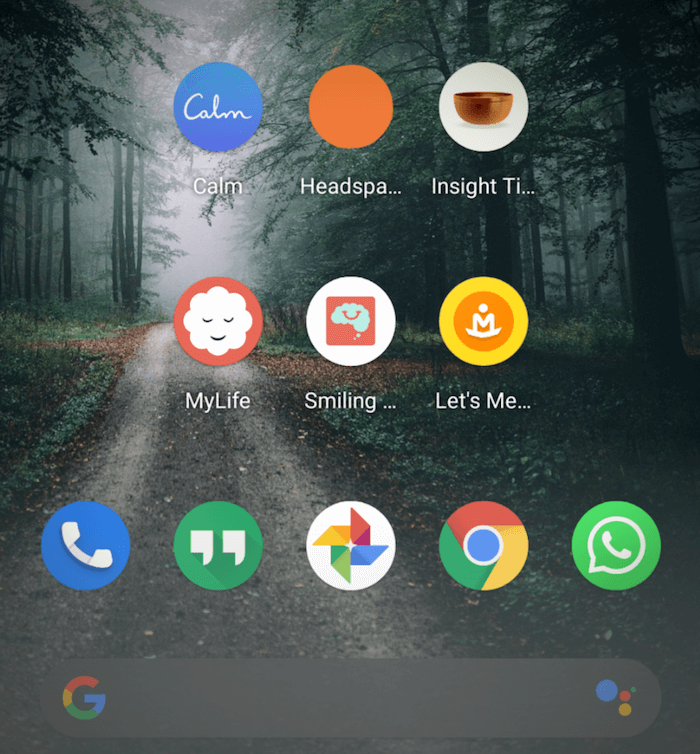
Meditation can feel hard, especially in the beginning. Guided meditations are immensely useful in making it a bit easier. They also allow us to explore different styles of meditation. There are several great meditation apps which you could use. Personally I have used the Insight Timer app on Android extensively and it is an integral part of my practice. It is free, available on multiple platforms and has thousands of meditations across several styles, even for those times when you have only a few minutes. YouTube is another great resource for trying out guided meditations. Regardless of the source, every meditation instructor has their own voice and style. Explore these guided meditations to find a style you like. Try it out consistently for a few days and observe how you feel.
There are a lot of different styles of meditation. Meditation apps have several meditations in each of these styles, so it can be hard to decide what to choose. I would suggest trying out short mindfulness practices or body scans to begin with since they are easier to follow. The style and length of meditation that works best for you could change daily based on what you feel comfortable practicing on a given day and what you are trying to get out of the meditation practice. For example, I have found mindfulness and body scan meditations very effective when I want to relax and calm down my mind. Loving-kindness meditations are great to cultivate compassion and improve relationships. Meditation techniques based on visualizing positive thoughts (also called manifestation meditations) are great when I’m working towards achieving specific goals. As you start meditating regularly, you might find yourself needing different meditation styles on different days based on your mood and needs. Also, using the same guided meditation every day can get monotonous and make it harder to focus. So it’s a good idea to keep exploring even if you find one you like.
Meditation can feel hard, especially in the beginning. Guided meditations are immensely useful in making it a bit easier. They also allow us to explore different styles of meditation. There are several great meditation apps which you could use. Personally I have used the Insight Timer app on Android extensively and it is an integral part of my practice. It is free, available on multiple platforms and has thousands of meditations across several styles, even for those times when you have only a few minutes. YouTube is another great resource for trying out guided meditations. Regardless of the source, every meditation instructor has their own voice and style. Explore these guided meditations to find a style you like. Try it out consistently for a few days and observe how you feel.

There are a lot of different styles of meditation. Meditation apps have several meditations in each of these styles, so it can be hard to decide what to choose. I would suggest trying out short mindfulness practices or body scans to begin with since they are easier to follow. The style and length of meditation that works best for you could change daily based on what you feel comfortable practicing on a given day and what you are trying to get out of the meditation practice. For example, I have found mindfulness and body scan meditations very effective when I want to relax and calm down my mind. Loving-kindness meditations are great to cultivate compassion and improve relationships. Meditation techniques based on visualizing positive thoughts (also called manifestation meditations) are great when I’m working towards achieving specific goals. As you start meditating regularly, you might find yourself needing different meditation styles on different days based on your mood and needs. Also, using the same guided meditation every day can get monotonous and make it harder to focus. So it’s a good idea to keep exploring even if you find one you like.
Resources
Here are some resources I have found immensely useful in my meditation practice:
- Guided meditations by Meg James on Insight Timer are among my personal favorites, especially the meditations Mindfulness Meditation, Time to Unwind and Slow Down & Accept.
- If you are looking to use meditation to help you achieve your goals, I recommend the meditation Manifest Your Unlimited Potential by Mark Guay.
- Sadia from Pick Up Limes shares some great tips on getting started with meditation in her beginner’s guide series parts 1, 2 and 3.
Wrapping it up
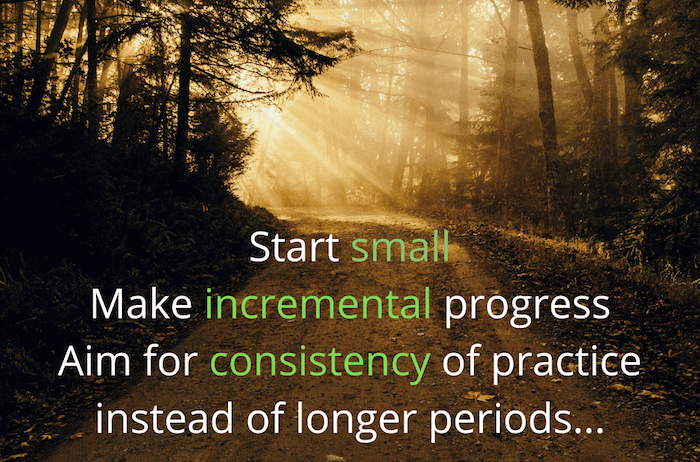
Meditation has greatly improved the quality of my life and I feel like I’m a different person now than I was a couple of years ago. Looking back at my own journey so far, I feel it takes time and effort to integrate it into our daily routine but the positive changes it brings about make it totally worth it. It’s helpful to take it easy in the beginning and aim for consistency of practice rather than longer periods. Meditating even for just 5 minutes every day is a great start. Initially it might feel like it’s not really doing anything for you. Hopefully with time you’ll experience the benefits of this practice and you’ll look forward to those few minutes in the day you have carved out. I hope this post was useful to you and motivated you to give it a shot. Hit the ❤️ button if it did, it would mean a lot! Feel free to leave a comment if you have any questions, I’ll be more than happy to share my experience. Happy meditating!
DISCLAIMER: This content is not medical advice and is intended for general education only. Don’t use this content to avoid going to your own healthcare professional or to replace the advice they give you.

I want to tell you something.
I finished my walk and bath prayed with this feeling ,
‘
This day is most precious in the world and especially this moment.
I took the mobile to see your
Message about your website.
What else can I say about your article!
My heart spoke before me!
I will read the article now!
Great article Yashodhan!! Very well put together and articulated greatly!
Comprehensive knowledge about how to start meditation. You have made it as easy as it can be.
Beautiful illustrations and presentations.
Thank you so much Mom! Sneha helped a lot with the illustrations and in coming up with great examples based on her own experience with meditation.
What an exposition on the art and the practice of meditation!
What I liked most, is the section “How meditation helps in daily life ” in which you say, ” getting distracted and noticing distractions are a part of the practice, as opposed to being hurdles in the practice” . This not just insightful but it is also a great encouragement to meditate.
And, ‘every single time we notice that we have lost focus is itself a moment of progress’ sums the essence of meditation.
You pose as a beginner but what you have written is masterly!
I was ready for a long form piece, but it didn’t feel like one. It is that well written!
You write so well, keep writing.
Thank you so much Baba, it means a lot to me 🙂 Looking forward to writing more!
Hi Yashodhan and Sneha,
Read your blog on meditation and its benefits very well written and explained in simple terms.
In todays fast pace life definitely mediation helps to us to calm down.Looking forward to read more blogs regarding mediation.
So keep writing and posting.
Thank you so much Trupti tai, I’m glad you liked it 🙂
Hi Yashodhan! Beautifully written..very insightful and helpful for a beginner like me..This is so me when you say, “Sometimes I procrastinate a task because of a seemingly valid excuse.” But yes because of the initial baby steps of meditation I have realised how I need to address my thoughts in this particular area.Will definitely try the apps recommended by you!
Thank you so much Eesha, I’m glad it was useful and relatable! 🙂
This article compels you to try meditation least once if one hasn’t tried it before. I always get really distracted whenever trying to meditate.. loved the take about accepting these distractions! Thanks for writing and sharing it!
Thank you so much Akanksha, I’m glad you liked it and found it motivating! 🙂
Thank you for this gift, Yasho! As I was reading this, I realized I had completely forgotten the joy and calm that meditation used to bring to my life earlier. You have inspired me to start my journey again!
I also really love how gently you take the reader through the different facets of meditation, how you hand-hold the beginner to explore practices that are suited to their needs and how you keep checking in to make sure the reader is not feeling overwhelmed. Beautifully written and illustrated! It was a pleasure reading yet another seedling from your wellness tree, and I hope this seedling reaches many minds who could make their life more wholesome with meditation.
Thank you so much Sheetal for your encouraging words! 🙂
Wonderfully written! some of the point that stuck with me :
“Labeling our thoughts also gives us insight into our thought patterns and can help us get more clarity.”
This technique sounds so promising. Ive always wondered what to do with those thoughts when I try to be mindful (or focus on my breathing). I can totally see, labeling them as a way to get out of it, as it gives that particular thought some closure.
“For example, trying too hard to focus on the breath can cause us to start controlling it, as opposed to just observing it. Allow yourself to relax and bring about a sense of ease while you’re trying to meditate. ”
Interesting point, I have observed that I can get breathless if I concentrate too much, maybe because I try to control it.
“Changing the anchor of meditation can also help.”
You have penned this perfectly!
Thanks for the app recommendations, cant wait to try them out.
Loved the article, cant wait to read more 🙂
Thank you so much for your wonderful comments and encouraging words, Yamini! 🙂 Like you said, I too end up controlling my breath and feeling breathless at times. I’m glad you found the article relatable and useful. Looking forward to writing more!
I’m extremely impressed with your writing skills and also with the layout on your weblog.
Is this a paid theme or did you customize it yourself?
Anyway keep up the nice quality writing, it is rare
to see a nice blog like this one these days.
Feel free to visit my page – Royal CBD
I truly appreciate this article post. Really looking forward to read more. Cool. Jennilee Ira Poulter